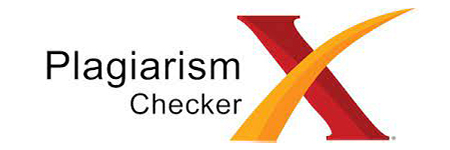Profil Komposisi BTP Campuran, Pelabelan, dan Penggunaannya pada Industri Rumah Tangga Pangan (IRTP) di DKI Jakarta
DOI:
https://doi.org/10.70716/alpha.v1i4.273Keywords:
Mixed Food Additives (BTP), Additive Composition, Distribution Label, Regulatory Compliance, Home Industry Food Producers , BPOM (Indonesian FDA), Flavoring and Coloring Agents, Food Product EvaluationAbstract
Mixed Food Additives (Bahan Tambahan Pangan/BTP campuran) have been registered with the Indonesian National Agency of Drug and Food Control (BPOM) since 2012. However, specific regulations governing mixed BTPs were only issued in 2016 and came into effect in 2017. To date, no studies have examined the registered mixed BTPs. This research aims to identify the composition and distribution labels of mixed BTPs, evaluate their compliance with existing regulations, and assess their use by Home Industry Food Producers (Industri Rumah Tangga Pangan/IRTP). The study utilizes secondary data comprising the composition of mixed BTPs obtained from BPOM, and primary data in the form of distribution labels collected from supermarkets and baking supply stores in Jakarta. The findings reveal that 78% (494 out of 632) of registered mixed BTPs consist of flavoring and coloring agents. The composition of mixed BTPs is categorized into three groups: (1) primary BTPs, which serve technological functions in the final food product; (2) secondary BTPs, which serve technological functions within the mixed BTP formulation; and (3) other substances that influence the physical form of the mixed BTPs (liquid, solid, powder, or paste/semisolid).
Downloads
References
Blank I, Pascual EC, Devaud S, Fay LB. 2002. Degradation of the coffee flavour compound furfuryl mercaptan in model fenton-type reaction system. J Agr Food Chem 50(8): 2356-64. DOI: 10.1021/jf01 1329m.
[BPOM] Badan Pengawas Obat dan Makanan. 2013. Peraturan Kepala Badan Pengawas Obat dan Makanan Republik Indonesia Nomor 6 Tahun 2013 Tentang Batas Maksimum Penggunaan Bahan Tambahan Pangan Pembawa. Jakarta: BPOM.
[BPOM] Badan Pengawas Obat dan Makanan. 2016a. Peraturan Kepala Badan Pengawas Obat dan Makanan Republik Indonesia Nomor 8 Tahun 2016 Tentang Persyaratan Bahan Tambahan Pangan Campuran. Jakarta: BPOM.
[BPOM] Badan Pengawas Obat dan Makanan. 2016b. Peraturan Kepala Badan Pengawas Obat dan Makanan Republik Indonesia Nomor 22 Tahun 2016 Tentang Persyaratan Penggunaan Bahan Tambahan Pangan Perisa. Jakarta: BPOM.
[BPOM] Badan Pengawas Obat dan Makanan. 2017. Peraturan Kepala Badan Pengawas Obat dan Makanan Republik Indonesia Nomor 27 Tahun 2017 Tentang Pendaftaran Pangan Olahan. Jakarta: BPOM.
Cahyadi W. 2008. Analisis dan Aspek Kesehatan Bahan Tambahan Pangan. PT Bumi Aksara, Jakarta.
Dewayani W, Muhamad H, Kadir A, Nappu MB. 2002. Pengaruh bahan penstabil terhadap mutu sari buah markisa. J Hortikultura 12(2): 110-117.
European Commission. 2011. Commission regulation (Eu) No 1130/2011 on amending annex III to regulation (EC) No 1333/2008 of the European Parliament and of the council on food additive, food enzyme, food flavourings and nutrients. J European Union 54(1): 178–204. DOI: 10.3000/19770677.L_ 2011.295.eng.
Hausch B, Lorjaroenphon Y, Cadwallader KR. 2014. Flavor chemistry of lemon-lime carbonated beverages. J Agri Food Chem 63(1): 112-119. DOI: 10.1021/jf504852z.
[Kemenkes] Kementerian Kesehatan. 2012. Peraturan Menteri Kesehatan Nomor 33 Tahun 2012 Tentang Bahan Tambahan Pangan. Jakarta: Kemenkes.
Kumar R, Sharma PK, Mishra PS. 2012. A review on the vanilin derivatives showing various biological activities. J Pharmtech Res 4(1): 266-279.
Lee J, Chambers DH, Chambers E, Adhikari K, Yoon Y. 2013. Volatile aroma compounds in various brewed green teas. J Molecules 18(1): 10024-10041. DOI: 10.3390/molecules.
Nasution R. 2003. Teknik Sampling. http://www.library. usu.ac.id>fkm>fkm-rozaini.
Pratiwi RP. 2018. Studi Bahan Tambahan Pangan dan Kesesuaian Label Kemasan pada Makanan Ringan Ekstrudat di Bogor. [Skripsi]. Bogor: Institut Pertanian Bogor.
Rahayu WP. 2011. Keamanan Pangan Kepedulian Kita Bersama. PT Penerbit IPB Press, Bogor.
Sevilla CD. 2007. Research Methods. Rex Printing Company, Quezon City.
Sjahwil LN, Andarwulan N, Hariyadi P. 2014. Tren flavour produk pangan di Indonesia, Malaysia, Filipina, dan Thailand. J Mutu Pangan 1(1): 9-18.
Zhu G, Xiao Z. 2015. Study on creation of an indocalamus leaf flavour. J Food Sci Technol 35(4): 647-651. DOI: 10.1590/1678-457X.6770.
Downloads
Published
How to Cite
Issue
Section
License
Copyright (c) 2025 Baiq Rismaulida Apriliani

This work is licensed under a Creative Commons Attribution-ShareAlike 4.0 International License.











